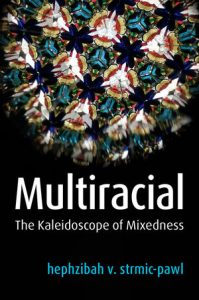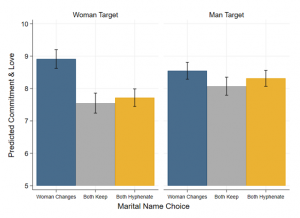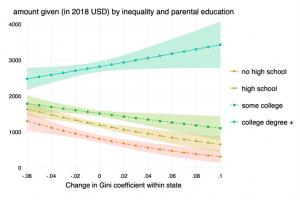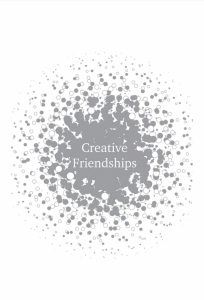It was just over 20 years ago, in 2000, when the US Census first offered the option to identify with more than one race. President Obama helped to amplify this message when he referred to himself as a “mutt” in reference to his parents’ Nigerian Black, White, and immigrant background. Fast forward to Kamala Harris’ election as not only the first woman but also the first mixed-race woman of color Vice President. Harris openly identifies as South Asian and Jamaican Black, and her identity was a point of celebration for many who identify as multiracial themselves. Interracial marriage didn’t even become legal in the U.S. until 1967 yet by 2020 the “two or more races population” was 33.8 million people, a 276 percent increase since 2010. In just a few decades, multiraciality has reshaped the ways we think about racial identification and posed challenges to strict divisions within the racial hierarchy.
Since about the 1970s, research began into what a “multiracial” identity means and the implications of multiraciality for society. In 1993 Maria P.P Root wrote the now famous “Bill of Rights for Mixed Race People,” which lays out a series of rights related to personal racial identity for those who identify with more than one race. The scholarship on mixedness has rapidly grown since then, with work on not only the complex facets of a mixed-race identity but also on varied intersecting topics such as discrimination against multiracials, psychological and emotional development of multiracials, multiracial identity across the life course, and the presence of multiraciality in marketing and popular culture. In my new book, Multiracial: The Kaleidoscope of Mixedness, I provide a critical synthesis of the scholarship on mixedness, from the 1970s until today. In analyzing the “field of mixedness” I engage with how mixedness, and multiraciality specifically, present key opportunities to challenge hegemonic racial thinking as well as potentially conform to that same hegemonic racial framework. While the book has 6 chapters that each take a different focus, in this post I am focusing on Chapter 3 that looks at the dynamics of mixedness in families.
The institution and practices of family are essential to understanding mixedness. There is a co-creative process between race and family wherein family creates and reproduces race and race shapes family formation. In the chapter on family, I review three main topics: interracial relationships, racial socialization, and in vitro and adoption.
Interracial relationships are an integral part of mixed studies because at the root of mixedness is recognition of a couple as interracial. Approval of interracial marriage is at an all-time high. The coupling that has faced the greatest resistance are Black and White couples but a recent Gallup poll shows 94 percent of US adults now approve of marriages between Blacks and Whites, compared to 20 percent approval a year after interracial marriages were made legal. Despite this increase in approval ratings, the celebration needs to proceed with caution. First, some interracial marriages are much more common than others, which reveals patterns in how some racial groups are seen as more acceptable than others. For example, relationships between Hispanics and Whites are the most common while White men with Black wives are rarer. sSecond, marriage does not always signal an end to discrimination; this point is true both for interracial couples with a White partner and also for interracial couples among people of color. Some individuals seek an interracial relationship to increase their social mobility and/or to distance themselves from their own familial background. Other research shows that sometimes the White partner expects high degrees of conformity from their non-White partner while others have a blending of cultures within the relationship. Interracial marriages, thus, can continue to conform to the rules of a racial hierarchy even while crossing the color line.
A second line of inquiry among mixed families is racial socialization. Racial socialization identifies how families teach their children about racial identity, racial discrimination, and race relations through explicit and implicit conversations and modeling behaviors. Parents of mixed-race children face the particular task of deciding upon their child’s racial identity as a child of an interracial couple could choose to have one or more racial identities that reflects their parents’ background. Parents may have a racial identity preference for their child, which can complicate the racial identity formation for mixed children. Some parents may want a specific monoracial identity out of group loyalty while other parents, particularly if one is White, tend to want their child to identify as multiracial. Such messages and preferences from parents range from supportive to combative, and have been shown to have a significant effect on how mixed-race people identify as an adult.
A third main line of inquiry is how adoption and assistive technologies are creating new types of mixed families. While these types of families are less included in the scholarship on mixedness, it’s important to recognize the formation of mixed-race families via adoption, gamete donation (sperm or ova), and gestational carriers. In the case of adoption, the majority of mixed families are White parents who adopt children of color. Current approximate estimates are that one in four adoptive households is transracial, one in six adopted children is foreign born, and 84 percent of international adoptions are transracial. Children of European and Asian descent are the most desired among potential parents. Of great concern within these families is how adopted children with White parents often reside in segregated White communities and explicit conversation around racial identity and racial discrimination is often lacking, which can lead to an unstable or complicated racial identity. While the children in these families may be monoracial themselves, the experience of residing in a mixed-race family household can lead to identifying as multiracial.
The interactive effects between race(ism) and family are present and salient for all families, but in the case of mixed-race families some questions are more particular. What patterns do we see among interracial couples? How do racial socialization messages shape racial identity preference? How are changes in technology and resources creating new pathways for forming mixed-race families? If the past twenty years is an indication, the amount of people choosing a multiracial identity will increase, and so we must continue to ask how multiraciality is informing our future.
hephzibah v. strmic-pawl is the author of Multiracial: The Kaleidoscope of Mixedness published with Polity Books. She is also the author of Understanding Racism (SAGE) and the facilitator for the Support Ella Baker Day campaign. Twitter/IG: @hephzibahvsp www.hephzibahvsp.com












